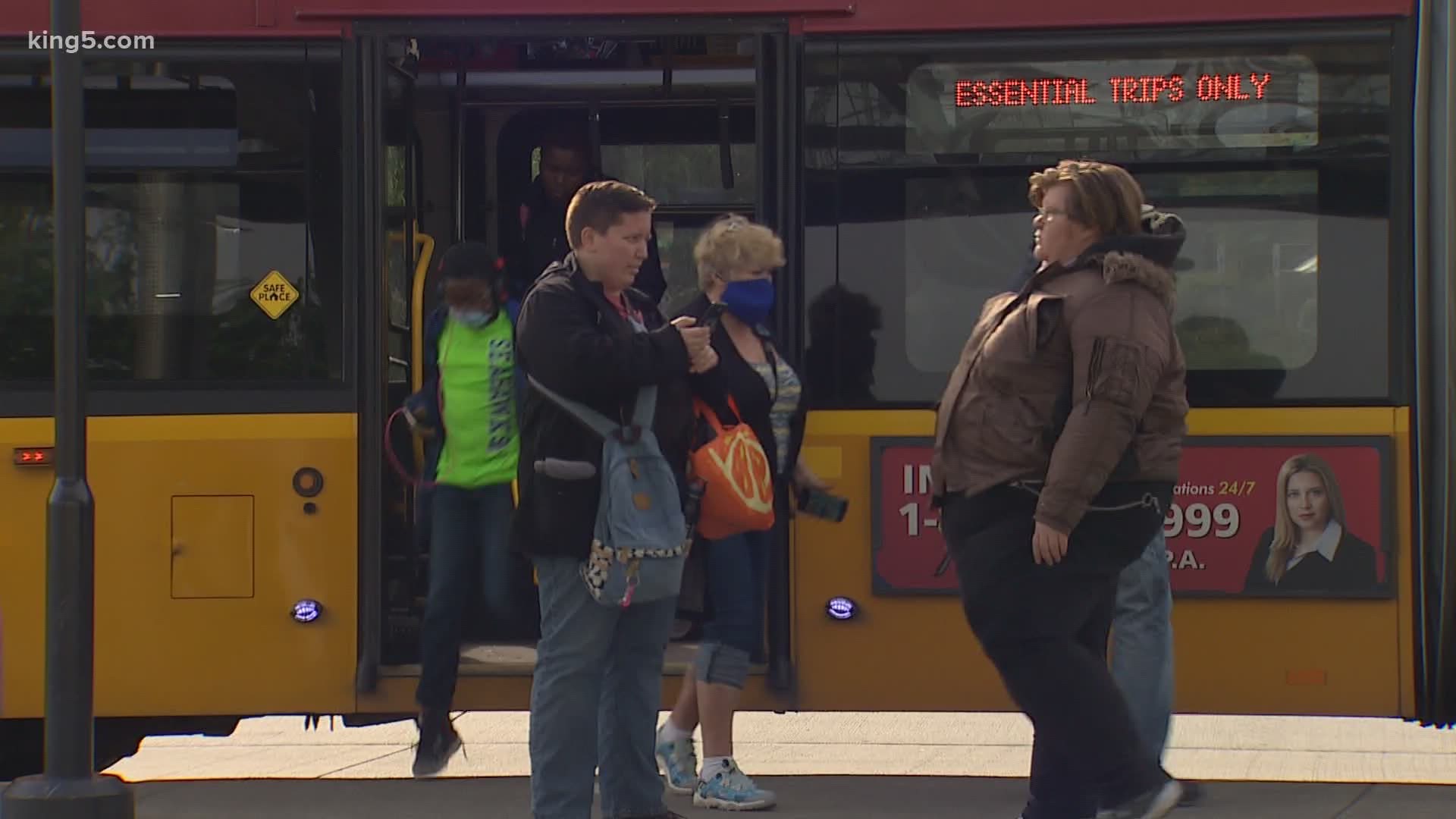SEATTLE — Grocery store clerk Michael Robertson said he was waiting for his usual bus, the Metro Transit E line, Saturday morning in Seattle when the bus with a marquee showing “essential trips only” drove past him.
Robertson wound up taking a $19 Uber ride to get to work on time. Robertson said a combination of reduced routes and increased transient riders is leading to overcrowding on Metro Transit buses.
He snapped two pictures of his commute last week, showing riders failing to stand six feet apart.
“It’s packed. It’s standing room only,” he said. “There’s nowhere to sit. There’s people standing up and holding onto the railings and there’s people in every seat.”
Metro Transit recently unveiled new passenger limits to support social distancing: 12 riders to every 40- foot bus and 18 riders to every 60-foot bus. But drivers can let more people on. Robertson said it doesn’t seem the limits are working on popular routes like his.
“It just gives me pause because I know it’s unhealthy and not a safe situation at all,” he said.
On Metro Transit’s blog, other riders have complained of an uptick in the number of riders who appear to be transients riding the bus for shelter. One person commented, “You’re letting homeless joyriders on the buses instead of people who are actually going to essential jobs!”
Another person blasted the transit agency for limiting riders while cutting routes.
“I’m all for social distancing, but Metro needs to step up and increase frequency to meet these new standards,” the poster wrote.
In a statement, Metro Transit spokesman Jeff Switzer said the new regulations may mean some riders may have to allow for additional travel time: “At-capacity buses are instructed to pass upcoming stops unless a passenger wishes to get off. We’re asking for our customers’ patience if an at-capacity bus passes their stop or if a bus that stops to allow passengers to exit looks full.”
Switzer also said the transit agency is adding security personnel, who will be “monitoring designated coaches and terminals where there has been reported crowding or increases in riders who are not reserving transit for essential travel.” His statement continued, “We’re also coordinating with the Healthcare for the Homeless Outreach Taskforce to share information with service providers to give non-destinational riders more information about available resources during the COVID-19 public health crisis.”
Robertson said he appreciates the steps Metro Transit is taking, but said at this time, essential workers need reliable public transportation geared specifically toward them.
“If we’re essential workers we should be provided with something as far as transportation,” he said.

